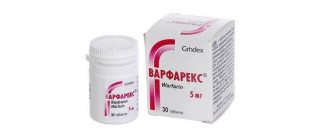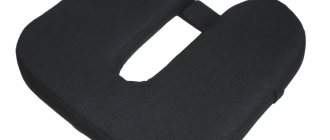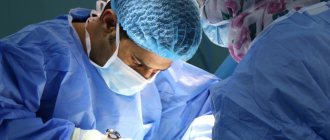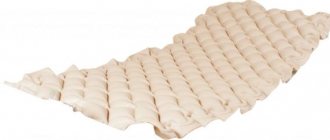Hemorrhoids are a disease that occurs in people of any age, but most often this problem is encountered by patients aged 35-55 years. The symptoms of the pathology are very unpleasant and cause significant inconvenience.
In the early stages, manifestations of the disease may cause minimal discomfort, but sooner or later an inflammatory process develops, which is accompanied by bleeding from the anus, burning and prolapse of nodes from the anus. Approximately every 10th person encounters these signs, and in the general structure of coloproctological diseases, hemorrhoids are in the leading position and account for up to 41% of all diseases of the colon.
The coloproctology department of the Federal Scientific and Clinical Center of the Federal Medical and Biological Agency of Russia provides highly qualified care for many diseases of the large intestine. The main emphasis in the treatment of hemorrhoids is on surgical interventions - high-tech operations are performed even in the most severe forms of the disease. Contact us for help, we will conduct a comprehensive examination, and, if necessary, remove hemorrhoids.
What is hemorrhoid surgery?
There are four stages of disease development:
- First stage. Characterized by bulging nodes and periodic bleeding.
- Second stage. The nodes increase, prolapses are added, but the nodes can be straightened yourself.
- Third stage. The nodes increase in size, prolapses are added, but the nodes can no longer be straightened on their own.
- Fourth stage. Constant loss of bleeding nodes.
In the initial stages of hemorrhoids, when the hemorrhoids are not very pronounced and do not cause significant discomfort, conservative treatment using tablets, rectal suppositories, and ointments is possible. In most cases, this method of treating nodes does not get rid of the root cause of the disease. For this reason, surgery is recommended for hemorrhoids.
Surgeons at our coloproctology department at the clinic of the Federal Scientific and Clinical Center of the Federal Medical and Biological Agency in Moscow use innovative, minimally invasive techniques when removing hemorrhoids. These methods are:
1. Infrared photocoagulation. This is a type of laser surgery, during which the leg of the node is cauterized. The high temperature of the laser radiation “evaporates” the tissue of the node, thereby eliminating the root cause of hemorrhoids - dilated veins. Our clinic uses equipment from the American company Reedfeed. The effectiveness of this technique in the treatment of hemorrhoids at an early stage is almost 80%, which is a very good result.
2. Sclerotherapy. This technology involves the introduction of a special sclerosant substance into the hemorrhoid. Due to their special chemical properties, these substances, when introduced into a node, cause collapse of blood vessels (veins) and their sclerosis (overgrowth), which is accompanied by a decrease in the volume of the node and prevents them from becoming inflamed in the future. The effectiveness of this technique is about 85%, with its help you can get rid of a maximum of 2 nodes at once.
3. Ligation with latex rings. With this method, a latex ring is placed on the stem of the hemorrhoid, which prevents blood circulation. As a result of a disturbance in the blood supply, a gradual death and subsequent removal of the weakened node occurs - after 1.5-2 weeks it disappears on its own, and in its place a small stump remains, which does not cause any discomfort to the patient. Our clinic uses latex rings and equipment for applying them from Kare Storze. The effectiveness of this method of treating hemorrhoids at stage 3 is 70%.
4. Cryodestruction. This technique for removing hemorrhoids involves freezing them with liquid nitrogen and subsequent destruction (used extremely rarely).
5. Desarterization of hemorrhoids or embolization of branches of the rectal artery. During this procedure, catheterization of the superior rectal artery is performed. Through a catheter, several Teflon balls up to 0.6 mm in size are introduced into the lumen of the specified blood vessel. These balls clog the small arteries that feed the nodes, resulting in their hardening. In this case, there is no need to remove the nodes themselves.
By wisely choosing one of the listed methods, you can help solve the problem for each patient. At the same time, the price for hemorrhoid removal in our clinic using minimally invasive techniques is affordable for any category of patients, and their use is preferable due to the lower number of complications.
Physical activity
It is important to know that the period after hemorrhoid removal is the time when you need to be especially attentive to your well-being. Ask your doctor about when you can return to normal physical activity.
During the first months, in good health, light physical activity is recommended, which may include:
- walking. Walking does not involve significant stress; it is an accessible and safest exercise even after hemorrhoidectomy. Start with a leisurely short walk every day, then the pace and time can be increased. Walking will help prevent constipation and improve blood circulation;
- morning exercises. Every morning, do a set of simple exercises that your doctor recommends;
- gymnastics with an emphasis on the abdominal muscles;
- flexibility exercises such as yoga.
If you experience pain or discomfort during exercise, stop doing the activity and talk to your doctor.
Methods of radical surgical treatment of hemorrhoids
Despite the existence of minimally invasive surgical methods for the treatment of hemorrhoids, classical radical hemorrhoidectomy or the Milligan-Morgan operation in various modifications remains in great demand. During it, a radical removal of the three main groups of internal nodes of the hemorrhoidal plexus is performed, as well as excision of existing external nodes.
The Milligan-Morgan operation is considered the optimal solution to the problem - it cures 100% of patients with stage 3-4 of the disease. However, many patients have questions: how much does this operation cost and why is it better than others? Note that the price for this operation for hemorrhoids is slightly higher, since the patient requires hospitalization in the department for several days. There are other types of hemorrhoidectomy: according to Longo, Parks, Ferguson. The doctor decides which operation to perform depending on the clinical situation.
During the surgical operation, our specialists use high-tech techniques, such as:
- ultrasonic or radio wave scalpel;
- laser installations;
- linear staplers for fabrics;
- Liga-Sure device.
By the way, the price of surgery for hemorrhoids does not change depending on what equipment the doctor uses - the specialist’s task is to perform an effective operation without complications in conditions of maximum comfort for the patient.
How long does the recovery period last?
How long do they stay in the hospital after excision of cavernous formations in the rectum? The duration of the recovery period after surgery to remove hemorrhoids always depends on the type of intervention and the characteristics of the pathology. After an open hemorrhoidectomy according to Milligan-Morgan, the duration of rehabilitation is 1–1.5 months, with a closed hemorrhoidectomy – 1–2 weeks. After intervention using the Longo method, recovery lasts 7–10 days in the absence of complications. If undesirable consequences occur, the recovery period may take up to 2-3 weeks.
As for minimally invasive techniques, such as laser therapy, infrared coagulation, cryotherapy, disarterialization and others, the recovery period is reduced to several days. We must not forget that the duration of the rehabilitation period directly depends on the correct implementation of the doctor’s recommendations. Patients who refuse to follow the necessary measures often develop complications, leading to a long and painful recovery.
How to prepare for hemorrhoid surgery
Preoperative examination includes an examination by a doctor and a number of laboratory and instrumental examinations, among which the following are mandatory:
- blood and urine tests (general);
- biochemical blood test;
- coagulogram;
- determination of blood group and Rh factor;
- blood test for antibodies to HIV and hepatitis viruses.
A few days before the planned date of surgery, the patient should adhere to a special diet with a minimum of foods that stimulate peristalsis. On the eve of the operation and 2-3 hours before it, you should do a cleansing enema. You should definitely tell your doctor if you are taking any medications; you should evaluate the possibility of taking them during and after surgery.
Briefly about the main thing
Excision of hemorrhoids is a traditional surgical operation, which is performed at such stages of the development of the disease when low-traumatic techniques are no longer indicated.
Traditional surgery is a serious procedure, which is characterized by a record low percentage of pathological recurrences. Doctors recommend removing pathological elements in a timely manner - this will completely restore health and prevent the development of numerous complications of hemorrhoids.
Surgical removal of nodes in City Clinical Hospital No. 31 is performed under anesthesia in a hospital setting. To guarantee the success of the operation, you should first cleanse the intestines and follow all the doctor’s recommendations during the rehabilitation period.
What is included in the cost of hemorrhoid removal surgery?
Treatment prices depend on several factors. Fundamental among them is the specific method of surgical intervention. How much a specific operation costs can be clarified during a consultation with a doctor, who will explain the features of a particular treatment method, warn about possible complications and talk about the features of the postoperative period.
The price includes a consultation with an anesthesiologist and pain relief. Our clinic uses all modern techniques, from local anesthesia to general anesthesia.
If there are indications, other coloproctological operations can be performed in our clinic, such as:
- excision of the epithelial-coccygeal tract;
- excision of perianal fissures;
- excision of rectal fistulas;
- rectopexy (surgery for colon prolapse) and many others.
Hygiene rules
After removal of hemorrhoids, hygienic care of the anus is of great importance. The patient needs to wash twice a day with warm water and baby soap. Linen should be soft, rough seams and synthetic materials are not allowed. After bowel movements, doctors recommend rinsing the anus with cool water. This will help increase vascular tone and stimulate blood flow from the tissues of the rectum.
By observing hygiene measures, many undesirable consequences can be prevented.
In order to not only remove dirt during the washing process, but also get maximum benefits, you can use herbal decoctions. Plants such as chamomile, string, nettle, yarrow, and St. John's wort are suitable for this. With their help, you can relieve pain, inflammation, and disinfect the treated area. Decoctions can be used for washing or added to local baths.
Important! It is recommended to use herbs and other folk recipes exclusively as prescribed by a proctologist.
Postoperative period
Rehabilitation after removal of hemorrhoids is the most important stage in the patient’s life. After any operation, efforts should be made to prevent complications and accelerate tissue healing. In the postoperative period, we prescribe a protective regime, a strict diet and certain medications.
The following rules must be observed:
- hunger on the first day after surgery (drinking liquids is allowed);
- a diet that excludes foods with a gas-forming effect - prohibited: black bread, legumes, milk, cabbage;
- It is forbidden to eat pickled foods, pickles, spices;
- alcohol is excluded;
- the diet is enriched with fermented milk products, it is recommended to consume a large volume of liquid - at least 1.5-2 liters per day;
- heavy physical labor is limited for at least 3 weeks after surgery;
- careful personal hygiene is required.
If coloproctological diseases occur, contact the Federal Scientific and Clinical Center of the Federal Medical and Biological Agency of Russia in Moscow - we will help solve any health problems.
Basics of therapeutic nutrition
Full recovery after surgery directly depends on what a person eats. Nutrition during the recovery period must comply with the following rules:
- Balance. Despite the exclusion of a number of foods from the diet, the body must receive the necessary vitamins and nutrients.
- Fractionality. It is recommended to eat in small portions, but often (up to 5-6 times a day).
- Cooking method. To reduce the risk of intestinal disorders, it is not recommended to fry food; it is advisable to prepare dishes by stewing, baking or boiling.
- Method of eating. Each piece should be chewed thoroughly before swallowing and avoid drinking various drinks while eating.
The suggested tips will help reduce the risk of constipation and flatulence, which can cause pain and discomfort to the patient during the rehabilitation period.
In addition to the rules of food intake, you should pay attention to the food set, because the proper functioning of the intestines depends on the type of food eaten.
Healthy food
The postoperative menu should include foods rich in fiber and moisture.
Recommended to eat:
- porridge (except rice and semolina);
- vegetable soups;
- vegetable puree;
- omelettes;
- casseroles made from meat or cottage cheese;
- low-fat fermented milk products;
- fruits and berries without seeds;
- compotes and juices;
- ground or finely chopped meat and lean fish.
It is recommended to consume fresh vegetables with caution. They are allowed to be eaten only if the person does not have a tendency to flatulence.
Prohibited Products
Rehabilitation after surgery requires minimizing the load on the intestines as much as possible. You need to remove from the menu:
- fresh milk;
- fatty fish and meat broths;
- seasonings;
- sauces;
- mayonnaise;
- vegetables with coarse fiber (onions, radishes, spinach, etc.);
- fatty fish and meat;
- rich fresh baked goods;
- any products with cocoa;
- fruits and berries containing small seeds (raspberries, kiwi);
- strong coffee and tea;
- alcoholic drinks;
- sparkling waters.
After the operation is performed, patients are not recommended to eat food during the first 24 hours, and after that they should eat in compliance with the above rules.
Many patients find it difficult to limit themselves in food and very often doctors hear the question: “After resection of hemorrhoids, how long should you follow a diet?” At least as long as the scars heal after surgery (on average, this happens within a month).
Those who are looking forward to finishing their diet so they can eat delicious food should think about the possible consequences: if you eat too much heavy and spicy food, hemorrhoids may reappear after surgery. Proctologists recommend that patients, even after the end of the rehabilitation stage, adhere to a milder version of the proposed diet and eat harmful foods in small quantities.
- What types of hemorrhoid surgery are there and how much does surgery cost?
How is hemorrhoidal excision performed?
Open hemorrhoidectomy
Open hemorrhoidectomy is the most “ancient” traditional operation, which was first performed in the 30s of the last century by proctologists Milligan and Morgan.
The Milligan-Morgan operation is performed under general anesthesia, less often under local anesthesia. The patient is positioned on the couch in a supine position, with the legs fixed on supports in an elevated position.
Hemorrhoidectomy is performed using a speculum and anoscope. The surgeon grabs the internal nodules and turns them out along with the surrounding tissue. The node is removed after cutting the skin and suturing the feeding vessel.
A characteristic feature of the method: the surfaces of the wound are not sutured - hence the name “open hemorrhoidectomy”. After the operation is completed, the surgeon installs a tampon with an antiseptic and a wound healing agent.
The patient remains in the hospital for 5-7 days. Stool softeners and healing tablets are prescribed.
Closed hemorrhoidectomy
Closed hemorrhoidectomy is a modified Milligan-Morgan operation, first performed in the middle of the last century by surgeon Ferguson.
Ferguson surgery can be performed under general or local anesthesia. When the anesthetic relaxes the anal sphincter, the surgeon inserts an anal speculum there. Subsequently, closed hemorrhoidectomy in general terms repeats the Milligan-Morgan technique: the vascular base of the hemorrhoid is sutured and bandaged.
Then the knot is removed, and the wound surface is sutured with catgut thread, which subsequently resolves. The average length of hospital stay after a Ferguson hemorrhoidectomy is 5 days.
In the postoperative period, painkillers and mild laxatives are prescribed. There is no need to remove the sutures, since the thread will dissolve on its own.
Parkes' operation
Another modification of the Milligan-Morgan operation was proposed in the middle of the last century by the English proctologist Parks.
Surgery is performed under anesthesia. The patient lies on his back with his limbs apart. The surgeon dissects the mucous membrane located above the nodule, a ligature is applied to the base of the nodule and stitched with thread.
Then the pathological element is removed, the thread is pulled, and the edges of the mucous membrane are sewn together. Thus, Parks' hemorrhoidectomy is a kind of plastic surgery.
Upon completion of the intervention, a tampon with medicinal substances is inserted into the anus. To prevent sphincter spasm, mechanical dilatation of the anus is used.
After a Parkes hemorrhoidectomy, the patient must fast to delay bowel movements, which threaten the sutures. Subsequently, a gentle diet is indicated to ensure timely soft stools.
Advantages and disadvantages of the Milligan-Morgan, Ferguson and Parkes methods
With the Milligan-Morgan, Ferguson and Parkes operations, both internal and external hemorrhoids can be removed.
The advantage of open hemorrhoidectomy is a high percentage of complete healing (relapses occur in only 2% of cases), and the main disadvantage is a very painful and rather long recovery period.
Closed hemorrhoidectomy is characterized by less pain and a shorter recovery period. However, there are also disadvantages: the sutures may come apart during bowel movements, as well as suppuration of the wound.
The Parkes operation is characterized by a short recovery period and minimal risk of complications. However, the technique is considered more difficult for the operating doctor.
It must be remembered that only a doctor can decide on the choice of treatment method.
Diagnostics
Diagnosis of hemorrhoids is necessary to establish the number and location of pathological elements, the presence of complications and concomitant diseases of the rectum.
Enlarged hemorrhoids are quite often combined with other pathologies: • anal fissure • proctitis (inflammation of the mucous membrane of the terminal intestine); • rectal polyps; • malignant tumor.
The necessary amount of information can be obtained using sigmoidoscopy. If there is a suspicion of damage to the overlying parts of the large intestine, a colonoscopy is performed.
If the proctologist decides on surgical intervention, all standard examinations will be needed: • general urine and blood tests, • coagulogram, • tests for blood-borne infections, • ECG, consultation with a therapist, anesthesiologist and gynecologist (for women).
Indications for traditional surgical methods
Surgical removal of chronically enlarged hemorrhoids is performed when minimally invasive techniques are technically difficult to implement or are doomed to failure due to the increased risk of relapse.
The most popular indications for excision with a scalpel: • Stage IV of the disease (nodes cannot be moved into the rectal cavity); • Stage III with large nodes (hemorrhoids can be reduced by hand in a warm bath); • a significant number of pathological elements; • presence of complications (necrosis, thrombosis, bleeding, etc.).
The decision to perform surgical excision is made on an individual basis. This takes into account the condition of the terminal intestine and adjacent organs, as well as the age and general health of the patient. To clarify all the data, it will be necessary to undergo a diagnostic examination.
Identifying the source of rectal bleeding
1. Endoscopic examination of the colon is indicated in selected patients with symptomatic hemorrhoids and rectal bleeding. Recommendation level IV.
Although hemorrhoidal disease is the most common cause of blood in the stool (hematochezia), there are many diseases, such as colorectal cancer, inflammatory bowel disease, various types of colitis, diverticular disease, and angiodysplasia, that can also cause bleeding.7 In most patients with colon cancer are not the cause of hematochezia, yet many doctors neglect this symptom and miss the opportunity to diagnose the tumor.8
Personal and family history, as well as physical examination, which may include proctoscopy and/or flexible sigmoidoscopy, will identify high-risk patients who require a more thorough diagnostic search. Previous endoscopic records should be reviewed whenever possible. Table 2 outlines the criteria for patients who should undergo a full colon examination using colonoscopy or another method of screening for colorectal cancer.9 If colonoscopy is not possible for one reason or another, flexible sigmoidoscopy should be considered in combination with other diagnostic methods given in the recommendations on colorectal cancer screening.10









